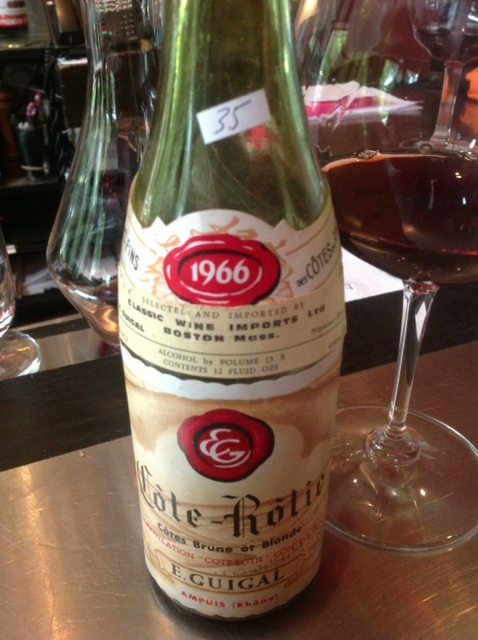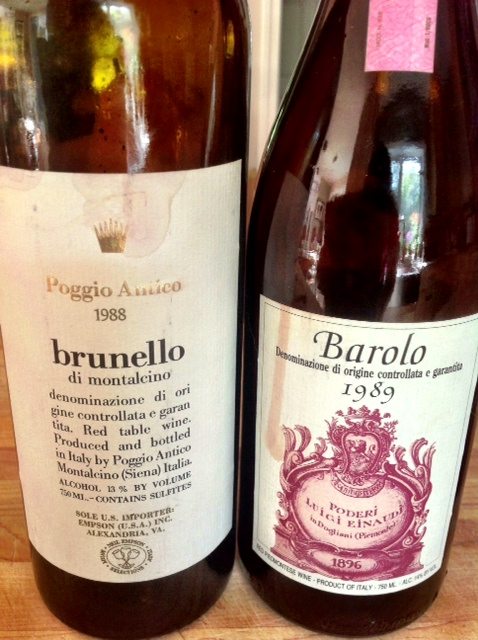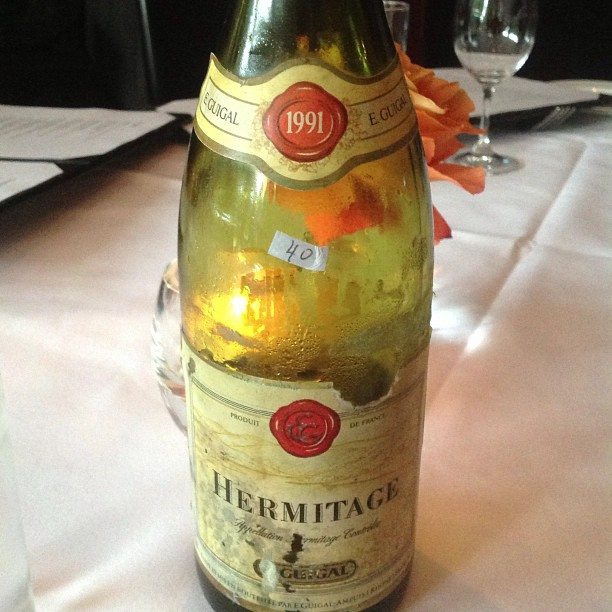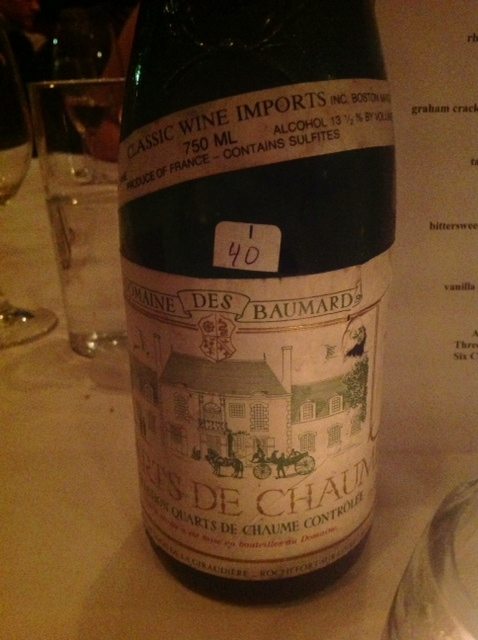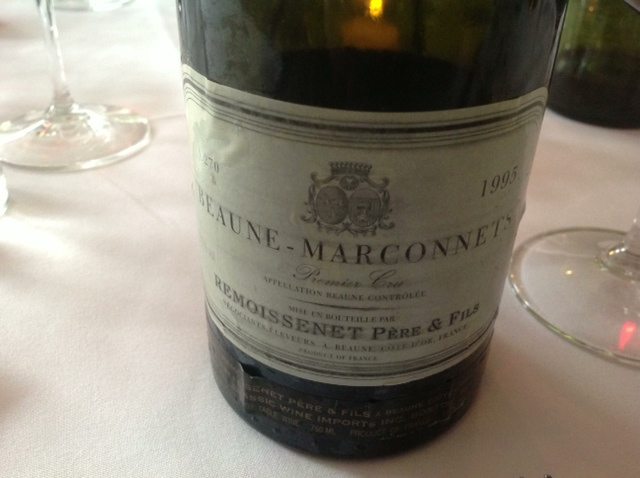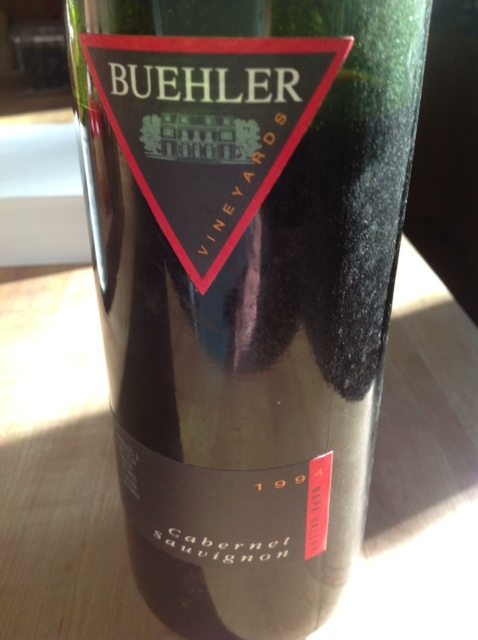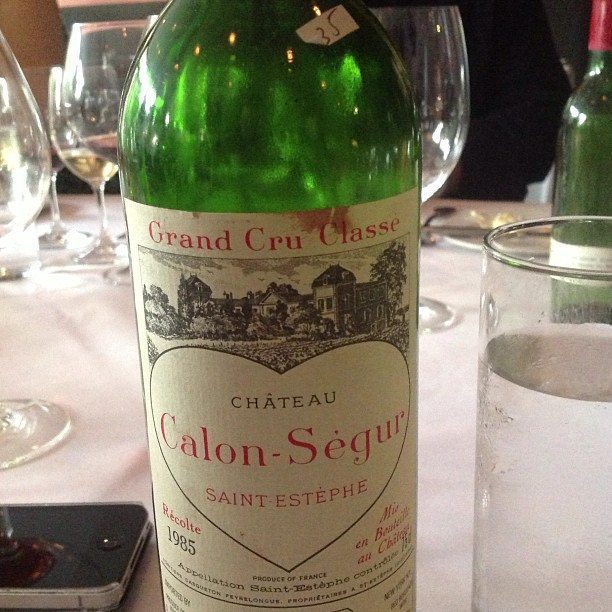A multitude of milestone celebrations produced a legion of guiltless permissions to pop corks on aged wines last month. Graduations, birthdays, and the annual Troquet summer cellar clearance converged. Birth year wines of graduating children, old bottles carried to my home by giddy parents on the precipices of new empty-nest lifestyles, Troquet wines on sale, and more bottles snatched from my own cellar were consumed to put small new dents in Boston’s old wine stocks.
Young wines are beverages to relish; aged wines metamorphic time capsules to cherish
I tasted a few of these old wines in their release years too; others not. Some of the wines simply tolerated an era of cold dark cellaring without succumbing gracefully to their privileged and restful nurturing. Most transformed themselves into more complex, elegant, and enjoyable renditions of simpler youthful profiles. A couple just grew old and a bit more tired. One or two fully gave in to corks or oxidation. Yet, every bottle was a celbratory chance to check in on another unique chemistry experiment involving compounds, sugars, and acids after years of commingling. No matter how imperfect nor superb the progress was, I cherished every one of them as thrilling intellectual and sensory moments in a lifetime of wine education. For me, drinking aged wine is the ultimate experience. It trumps all other perfect wine moments including food pairings, blind peer tastings, and trophy indulgences, as examples.
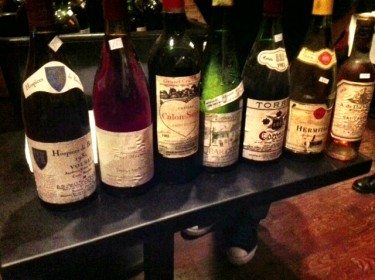 Imagine saying goodbye to an infant somewhere between their birth and 2nd birthday, and then only seeing them next as a teenager or young adult. In that moment of reacquaintance it is natural to search for connections, look for features you recognize, size up a new first impression of how they turned out, and then spend some time together understanding the nuanced outcomes of their metamorphic advancement. Checking in on an old wine is not all that different!
Imagine saying goodbye to an infant somewhere between their birth and 2nd birthday, and then only seeing them next as a teenager or young adult. In that moment of reacquaintance it is natural to search for connections, look for features you recognize, size up a new first impression of how they turned out, and then spend some time together understanding the nuanced outcomes of their metamorphic advancement. Checking in on an old wine is not all that different!
While wines mature into fit beings during their bulk production and pre-release bottle aging, older bottle aged wines build on that maturity through aging into something more graceful and hopefully complex. With older wines allowed to rest at consistent and optimal temperatures out of UV light’s harmful way, one dimensional aromas turns into multi faceted bouquets. Purple turns into red and brick and brown. Green turns to yellow then orange or brown. The presence of acidity extends the process while tannins connect and link up as polymers to give aged wine their softer edges. Exposure to oxygen creates complexity, yet simultaneously sucks at a wine’s life. Bouquets move from fruity to leathery to earthy and onward. No two wines behave the same. Nothing is completely predictable. Each one tells a separate story. It is all just so much geeky fun.
Here is a look at a few of the many specimens that, without exception, infused last month with learning, resolved curiosities, and unabashed joy:
1966 Guigal Cote Rotie Brune et Blonde (375 ml)
A historic vintage for Guigal’s Cote Rotie program since it was the first one he bottled a single vineyard La Mouline. More “La La’s” followed with La Landonne in 1978 and La Turque in 1985. I chose this traditional Guigal blend of the two distinctive Cote Brune and Cote Blonde Cote Rotie sub regions with some trepidation wondering if the half bottle’s heavier oxygen to wine ratio would produce a tired old wine. Shockingly, the wine was completely vibrant, alive with kicking acids and transformed into a silken mouthfeel. Mocha, tree bark, and toffee candy became more and more accessible as the wine relaxed in the glass for 15 minutes. There were metallic mineral flavors at the core. After a half hour of oxygen contact the wine refused to shrink, and the muted candy sweetness proliferated. This is a wine to buy at auction. Amazing progress for a half bottle, I can only guess how much longer a 750 ml might continue to please.
1988 Poggio Antico Brunello di Montalcino and 1989 Luigi Einaudi Barolo
A few couples gathered at my house for a celebratory graduation wine and food soiree, and one buddy brought the 1989 Einaudi Barolo. I plucked the Poggio Antico from the previous vintage from my cellar just for comparison. Granted it was apples and oranges, or more specifically Sangiovese and Nebbiolo. The Einaudi was on its last legs. Some sweetness at the core, brown even beyond the edges, and suppleness in the mouth produced an experience unavailable to the impatient. Some tobacco and leather notes persist, but are fading quickly. It is a lovely wine, but definitely on the decline.
The 1988 Brunello from Poggio Antico was a completely different story. The wine retains some youthful brawn, continues to offer black cherry flavor, but combines it all with a multitude of secondary aromatics producing an ethereal bouquet of leather, cedar, and herbs. The wine is completely balanced and shows no signs of decline. I drank this wine on release and it was a tannic tight monster. Those tannins have resolved and the wine gifts a mellow mouthfeel now. I will be looking for this wine at auction and cellar sales. It is a compelling purchase when you are in your fifties like me, and can buy a 25 year old wine that has 20 more years of excellent development ahead of it.
1991 Guigal Hermitage Blanc
1991 was a powerful and quality vintage in the northern Rhone. I can never forget this because it is my oldest son’s birth year and I had to ignore Bordeaux and concentrate on California and the northern Rhone in constructing his birth year case that I plan to turn over to him at his wedding. But, his case includes all red wine. This Guigal Hermitage Blanc has progressed admirably. While it is regrettably missing some of the sweet fruit from the Marsanne that includes small amounts of Rousanne in the blend, there is classic nutty flavor and bouquet development that makes the wine interesting. Golden in color, there is oxidation in evidence, and the wine gives a dusty impression. Still, a wonderful drinking experience of a lively-enough 20+ year white wine. Time to drink up.
1998 Canon-Fronsac Saint-Michel
To the east of Bordeaux’s primary regions, close to St. Emilion, this Canon-Fronsac designated bottle reflects the superior appellation inside Fronsac. Dominated by Merlot in the blend, this is now a beautiful wine. This is actually a $20 wine at release today. At 15 years old, the wine shows deep fruit, earth, and herbs. There is richness in the mouthfeel, but very manageable tannins. The wine has definitely benefitted from cellaring, but it is easy to connect with its youth at this stage. While enjoyably drinkable now, it is a wine to go find in the secondary markets for almost nothing and add to the cellar.
1988 Baumard Quarts de Chaumes
100% sweet Chenin Blanc from the Loire Valley. The wine’s original acidity that allows the boytritis infected sweet fruit to persevere has been a noble preservative. The bouquet combines pineapple, tangerine pith, nuttiness, and a mushy apricot of the edge of going bad. It’s all magical except for a touch of burnt match that annoyingly gets in the way. This Baumard a killer medium sweet wine that Chris from Troquet rightly suggests will make a much better aperitif than dessert wine. I would not hesitate buying more of this for the cellar.
1995 Remoissenet Pere et Fils Beaune les Marconnets
An unremarkable year in Burgundy, this wine was still interesting enough to drink. It still has some of its stuffing remaining. A pleasant Pinot Noir with primarily licorice bouquet notes, there is bothersome medicinal and volatile acidity at play to discourage pursuit of more bottles. A great look back at off vintage Burgundy and a learning experience. Not a wine to chase.
1982 Ormes de Pez
A St. Estephe from the classic 1982 Bordeaux vintage. How could you pass it up for $30 at the Troquet wine clearance sale? Continued concentration and classic sweet Bordeaux fruit make the wine a steal. Browning at the edges with a soft mouthfeel, the wine has less complexity and secondary aromatic development than you might want in a 30 year old Bordeaux. Still, it is a lovely wine even if it does not show all the benefits of age, and one that should last another ten years before its decline becomes an issue.
1994 Buehler Cabernet Sauvignon
My graduating son’s birth year. A friend brought a few bottles to a party at my house in the mid nineties and I snuck one bottle into the cellar. In its youth this was an overblown, over ripe simple California Cabernet. At 19 years old, it is still one dimensional, a little tired, and lacking in any of the benefits of aging. It is an example of the mid nineties California Cabernets that hang onto their robust ripe profiles as they decline, without changing into anything more complex. Continue to live and learn not to keep sticking your finger in the light socket.
1985 Calon Segur
I favor this Bordeaux vintage. At release, these wines were generally lush and ripe, products of a high yield vintage. Lots of naysayers felt cellaring was foolish. That proved untrue with many of the first growths and second growths. This wine has two sides to it. The color is now brown and black without any real red left. There is a touch of VA and wet cardboard in the nose. A pleasant tobacco and burnt wood bouquet eventually emerges after ten minutes in the glass. The wine tastes a whole lot better than it smells. Hmmm. It is actually delicious aged and elegant Bordeaux on the palate. A tale of two worlds.
1981 Patriarche Pere et Fils Hospices de Beaune, Volnay Cuvee Blondeau
Corked, missing fruit, undrinkable.
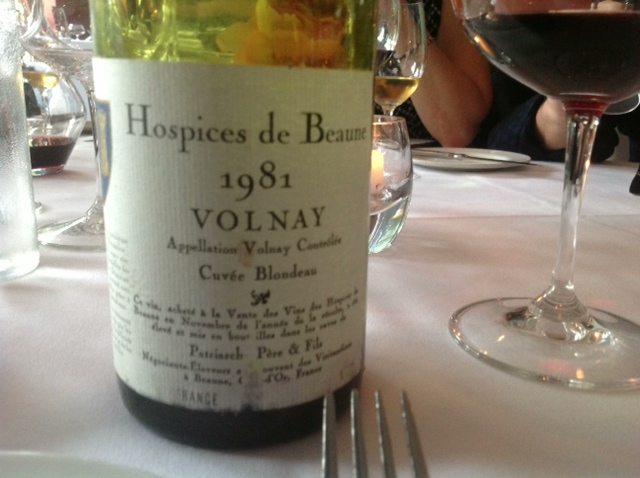 As you can tell, not every wine was a winner. Some were quintessentially thrilling. Each old wine told a life story. When I buy a young wine that produces less pleasure than anticipated, it seems liked a mistake. When I open an aged wine that has little left to give, it is wine education through historic participation. June was a month full of permissions to drink beautiful aged wines without one single regret. If your cellar is young and still forming, July is a great time to run to Troquet and grab a time capsule of wine from Chris’s sale table at a ridiculous low price.
As you can tell, not every wine was a winner. Some were quintessentially thrilling. Each old wine told a life story. When I buy a young wine that produces less pleasure than anticipated, it seems liked a mistake. When I open an aged wine that has little left to give, it is wine education through historic participation. June was a month full of permissions to drink beautiful aged wines without one single regret. If your cellar is young and still forming, July is a great time to run to Troquet and grab a time capsule of wine from Chris’s sale table at a ridiculous low price.
